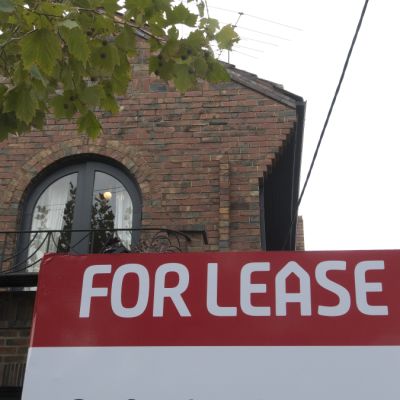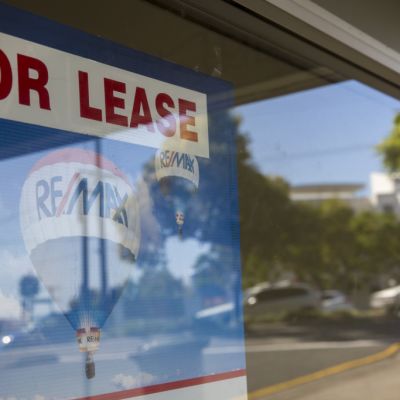Weekly median rents spike in two capital cities, decline in just one: new report
Renters in most capital cities across Australia would have seen a rise in their weekly rents in the past year, new Domain data shows.
While the more populous east-coast cities of Sydney and Melbourne suffered declining and flat rents, respectively, every other city has recorded increases, according to the latest Domain Rental Report released on Thursday.
Domain research analyst Eliza Owen said most cities’ rental property markets had not kept pace with a growing population, putting upward pressure on asking rents.
Sydney
The harbour city was the only capital to see a decline in weekly asking rents for houses and units but remained one of the most expensive places for renters.
Sydney’s median weekly rent for houses dropped 4.5 per cent over the year to September to $525 – the steepest annual decline on record.
Meanwhile the median weekly asking rent for units dropped 4.6 cent to $520, returning to 2016 prices.
Despite these declines, Sydney remains one of the most expensive cities for renters. Its only rival is Canberra where it costs $550 a week to rent a house.
Ms Owen said with a tightened vacancy rate of 2.9 per cent, Sydney was enjoying the last remnants of the construction boom but falling rents might be coming to an end.
“The combination of a slowdown in construction and a steep decline of the investor segment of the market against increasing population will serve to steady rents over the next few quarters,” she said.
Melbourne
Further south, Melbourne rents have mostly remained steady. The median house rent remained at $430 over the year and unit rents increased by $10 over the past year to $420.
Despite a similar construction boom occurring in Melbourne, rents have not dropped as they have in Sydney because of stronger population growth in the Victorian capital, according to Ms Owen.
Domain data suggests there has been a 9 per cent increase in the number of rental properties over the year ending to September, she says.
“But email inquiry per listing has grown by a similar rate, suggesting the demand from rental households has kept up with the supply of rental properties.”
Brisbane
Brisbane rental prices rose 1.3 per cent for both houses and units over the past year, with a median weekly rent for houses of $405 and $380 for units.
Ms Owen said the large number of unit rentals added to the market has not resulted in a drop in asking rents.
“We know there has been strong population growth to south-east Queensland,” she said. “A lot of the stock going up is new and that may be keeping up rental prices as well.
“We know the rental vacancy rate has tightened so that does suggest it is a relatively tight rental market.
“It’s a story of greater demand through migration.”
Median weekly asking rent: houses
| Capital City | Sep-19 | QoQ change | YoY change |
| Sydney | $525 | -0.9% | -4.5% |
| Melbourne | $430 | 0.0% | 0.0% |
| Brisbane | $405 | 1.3% | 1.3% |
| Adelaide | $385 | 0.0% | 2.7% |
| Perth | $370 | 1.4% | 5.7% |
| Canberra | $550 | 0.0% | 0.0% |
| Darwin | $490 | 1.0% | -2.0% |
| Hobart | $450 | 0.0% | 9.8% |
| Source: Domain Rental Report | |||
Adelaide
In the past year, Adelaide has also seen rents increase: the median weekly rent for houses is up 2.7 per cent to $385, with a sharper increase for units at 3.3 per cent, up to $310.
Most rent increases were found in the central and hills region as well as in the south.
The modest rise in rents had occurred due to a combination of slow population growth and limited investment activity, Ms Owen said.
Perth
Perth’s rental market had strengthened due to steady population growth and a complete drop-off in residential construction, Ms Owen said.
House rents have increased 5.7 per cent to $370 in the past year. Despite seeing the second strongest rent rise in the country, it remains the most affordable capital in which to rent a house.
Meanwhile, unit rents have increased 3.3 per cent in the past year to $310.
“The Perth market has been very subdued for a very long time,” Ms Owen said. “It’s a result of continued steady migration against a lack of investor interest.”
Canberra
Canberra has retained its title of the most expensive capital city to rent a house, with its median weekly rent at $550, remaining steady over the year.
Unit prices have increased 4.4 per cent over the same period to $470 a week.
Over the past year, house and unit rents increased the most in Belconnen, but fell modestly in Woden Valley, Domain data shows.
Darwin
Despite house rents dropping 2 per cent over the year to $490 and unit rents sliding even further by 5 per cent to $380, the city’s rental market showed a glimmer of hope for landlords.
Darwin house rents had their first quarterly increase since December 2017.
“There’s been a gradual pick-up in migration against very little construction,” Ms Owen said. “We’re starting to see a pick-up in mineral and resource exploration and this is serving to help the mining states and may contribute to increased migration to a regional city like Darwin.
“Because it’s a very mobile, project-based workforce, it’s still a volatile market.”
House rents went up by 1 per cent or $5 to $490 in the three months to September.
Hobart
The Tasmanian capital recorded the steepest increase over the year, with house rents rising 9.8 per cent or $40 to $450.
It was even larger for unit rents, with a whopping increase of 12.9 per cent to $395 per week.
Hobart was Australia’s tightest rental market and had the lowest vacancy rate of 0.5 per cent, Ms Owen said, adding there were just 120 vacant properties across the city in the past quarter.
“The story with Hobart seems to be that the private rental market has been crowded out by short-term accommodation investment and there’s strong demand for rentals but very limited development,” she said.
“Annual wages growth across Tasmania is about 2.5 per cent compared to rent increase of 9 and 12 per cent. It’s a really bad situation for renting households in Hobart.”
Median weekly asking rent: units
| Capital City | Sep-19 | QoQ change | YoY change |
| Sydney | $520 | -1.00% | -4.60% |
| Melbourne | $420 | 0.00% | 2.40% |
| Brisbane | $380 | 0.00% | 1.30% |
| Adelaide | $310 | 1.60% | 3.30% |
| Perth | $310 | 0.00% | 3.30% |
| Canberra | $470 | 0.00% | 4.40% |
| Darwin | $380 | -1.30% | -5.00% |
| Hobart | $395 | 3.90% | 12.90% |
We recommend
We thought you might like
States
Capital Cities
Capital Cities - Rentals
Popular Areas
Allhomes
More










